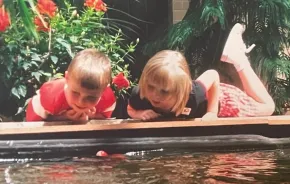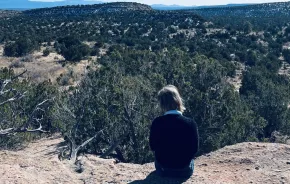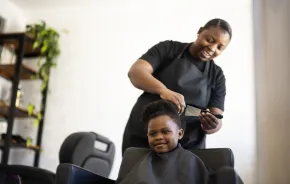
I know it’s OK to reply “I don’t know” to my daughters’ questions, but their latest inquiries regarding racism and hate crimes leave me grasping for better answers.
My 12-year-old asks me why, late last month, Jeremy Joseph Christian of Portland shouted hate-filled comments at two teenage girls, one of whom was wearing a hijab. My daughter asks why, according to police, Christian stabbed three men who confronted him, killing two and seriously injuring the third. She asks why there’s so much hate.
Take action, raise kind
Join ParentMap in a year-long conversation to explore how families and schools can nurture empathy, mindfulness and kindness. See the latest in our Raising Kind series.
I don’t have an answer (does anyone?) but that doesn’t mean I shouldn’t talk about incidents like the one that occurred on May 26 in Portland.
“Our urge is to shield our children, but then we miss an opportunity to talk about emotions and safety issues,” says parent coach Sarina Behar Natkin. “If we sweep talk of hate crimes under the rug, we miss the opportunity to find out what they may already know and correct any misinformation, and we’re modeling that it’s OK to ignore racism.”
When Natkin talked with her 9- and 12-year-olds about the attack in Portland, she first asked what they thought of the incident.
“My older daughter said these hate crimes keep happening because our leaders are showing so much hate,” Natkin says. “By throwing questions back to my kids, I know where they’re at and how my responses can meet their needs.”
The trio then talked about how and why people decided to help the young women. She also assured her daughters that they were safe, and they discussed what to do in a potentially dangerous situation. Natkin told her daughters to, if possible, leave, and, if not possible, to duck, cover and look to a grown-up for help. (For more on her approach, read this article from Natkin.)
Bigger than Portland
The attack last month is far from the only hate crime we hear of these days. While hate and the crimes born of it are far from new, the Southern Poverty Law Center reported a surge in bias-related incidents last year immediately following the election.
Thankfully, we have local experts to advise parents on where to start a conversation about this uncomfortable topic. One option: the Northwest chapter of Kids4Peace International.
 The organization offers workshops on Islam, Judaism and Christianity targeted at middle and high school student to help them understand the similarities between these religions while recognizing, respecting and appreciating their differences, says Jordan Goldwarg, the northwest regional director of Kids4Peace.
The organization offers workshops on Islam, Judaism and Christianity targeted at middle and high school student to help them understand the similarities between these religions while recognizing, respecting and appreciating their differences, says Jordan Goldwarg, the northwest regional director of Kids4Peace.
The organization’s core program is the Kids4Peace Community, a group of sixth to twelfth grade students who meet monthly to build a network focused on interfaith education, dialogue, leadership skills and advocacy. Kids4Peace also offers a summer camp for students currently finishing sixth, seventh or eighth grade.
The goal, says Goldwarg, is “to educate youth so they have the confidence and knowledge to push back through sharing facts when they hear their peers say things that are not true about religious groups.”
He acknowledges that incidents like Portland — where intervening bystanders were attacked and killed — can shake anyone’s resolve. “To see people stand up and be hurt, that’s really scary,” he says, adding that Kids4Peace never tells kids to “put themselves in a situation where they feel unsafe or threatened.” Rather, “most of the situations they find themselves in are hearing bias or ignorance spoken in peer-to-peer interactions.”
Other local organizations doing similar work include One World Now, which offers foreign language study and cross-cultural opportunities in Chinese, Arabic or Korean for youth; Middle East Peace Camp, where kids from diverse backgrounds learn how to live together; and Seattle Young People’s Project, a 25-year-old youth-led community organization based in Beacon Hill.
Of course, one of the most effective tools we can use to manage negative thoughts is to take positive action by helping others. Goldwarg has seen the power of this firsthand: A 12-year-old boy involved with Kids4Peace once wrote a letter to the editor at The Mukilteo Beacon in support of a controversial plan to build a mosque in his community.
“I see our youth doing things like that, which is the opposite of stereotypical millennial apathy,” Goldwarg says. “Whenever I am feeling despondent, I realize that our kids are taking action instead of wringing their hands. They have set off to become our teachers.”
Additional resourcesA good place to start is the Anti-Defamation League (ADL), says Sarina Behar Natkin. She recommends this one-sheet with five tips for talking to kids about hate incidents; find more ADL resources. You might also try this book list of reads the help encourage diversity and difference; apps that do the same; and volunteering options for families. |











